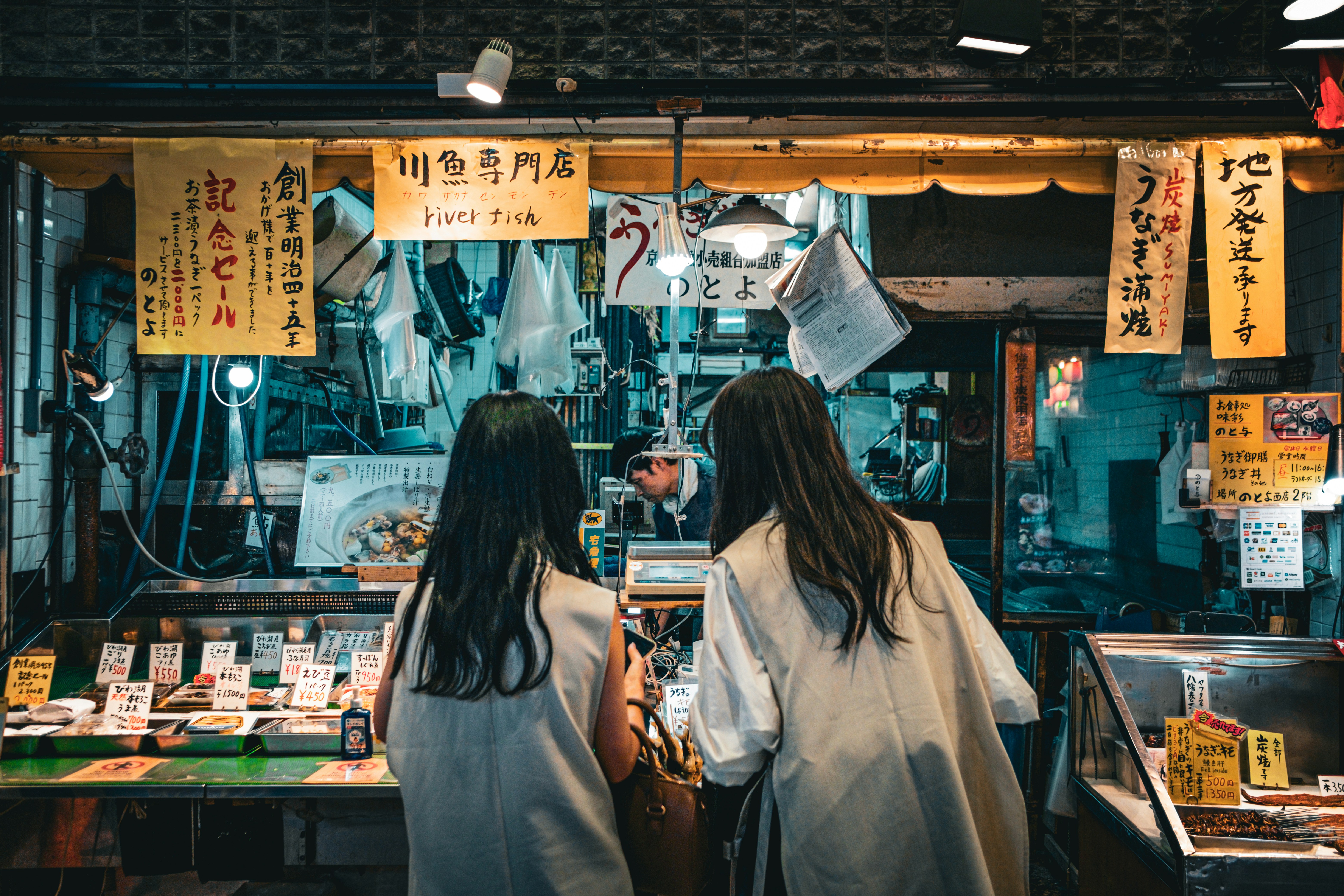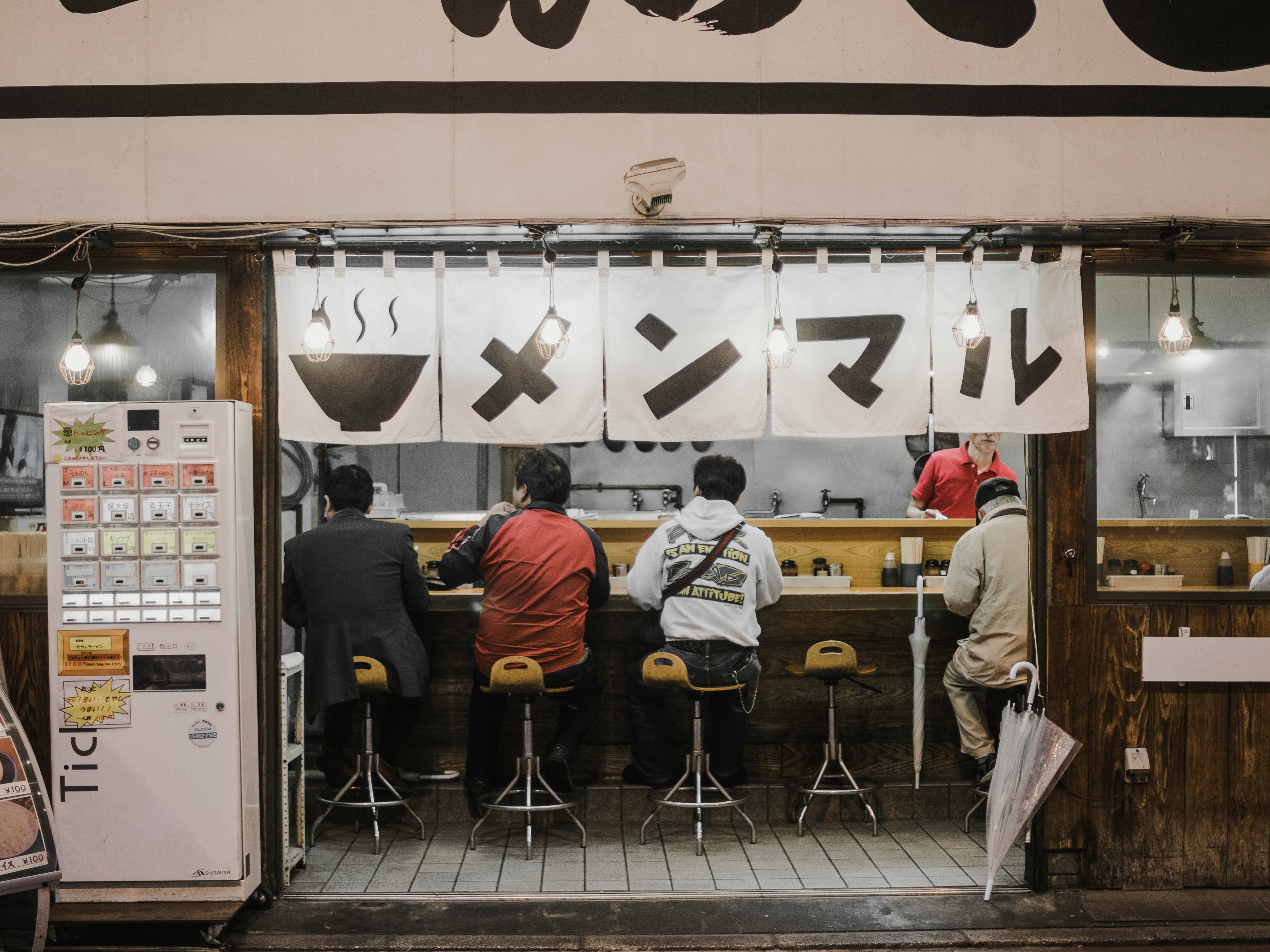
Curator’s statement
Kyoto is such an enchanting place with its old-world charm and rich history. As the historic capital of Japan, you’ll find plenty to do here. From exploring an abundance of historical sites to walking along the river in Gion, to finding incredible food everywhere you look to taking day trips to nearby towns, Kyoto should absolutely be put on your Japan bucket list. I recommend staying in Gion, near the river. Here you’ll find the picturesque part of town that seems to have been frozen in time, along with tons and tons of restaurants and shopping.
The Fora Difference
Book with Alex to access exclusive perks and experiences on your trip.
Killer perks
Free upgrades, spa credits and more—we got you
Personalized recs
Customized travel planning for your style
Insider knowledge
Expert advice from people who’ve actually been there
Where to stay in Kyoto, Japan
Unlock perks by contacting Alex to book your trip.
Things to do in Kyoto, Japan

Nishiki Market
Unlike Tokyo’s Tsukiji Market (which opens very early), Kyoto’s very own Nishiki market opens around 9 am. Nishiki market is a covered market (so you can even comfortably go during rainy days!) full of delicious food and artisanal stores. You’ll be able to try everything from wagyu skewers to sashimi to Takoyaki to fresh fruit. Nearby, you will stumble upon Daishodo, a unique bookstore and print shop with tons of unique art.
Golden Pavilion
The Golden Pavilion, also known as Kinkaku-ji, is a Zen Buddhist temple renowned for its stunning exterior covered in gold leaf. Originally built in the 14th century, it is a UNESCO World Heritage site and attracts visitors from around the world.
Fushimi Inari Taisha
Home to the infamous red arches, Fushimi Inari Taisha is one of Kyoto's main attractions. This 2.8-mile hike is incredibly unique because you're surrounded by 1,000 torii gates for almost the whole length of the hike. Make sure to bring proper clothes and shoes and go early to avoid crowds. The hike is open 24 hours a day.
Johangu Shrine
Johangu Shrine was built in the 8th century for protection from bad spirits. It’s situated among gorgeous gardens that are home to some events and festivals throughout the year. During the spring, the plum blossoms make this shrine one of the most beautiful places in Kyoto.
Omakase
Wandering through Gion, if you look closely, you’ll find a ton of hidden restaurants. At first, you may think everything is closed, but on further inspection you’ll find that many of these places are completely full and offer omakase courses, a unique culinary experience. It’s common for there to only be a few seats per restaurant, so make sure to book ahead if you want to experience Japanese omakase for yourself.
Arashiyama & Bamboo Grove
Spend an afternoon wandering around Arashiyama. Here, you’ll find cute cafes and restaurants along with boutique shops and places that you can pick up souvenirs to bring home. You can rent canoes and paddle along the river or rent Kimonos and spend the day in traditional attire (many Japanese people actually do this). Bamboo Grove is one of the main attractions in this area. There, you’ll find yourself on a serene walking path surrounded by a forest of towering bamboo.
Day Trips:
Nara
Less than an hour by train, Nara is most well-known for its population of wild deer. Steps from the station, you’ll find deer roaming about in parks, crossing the street, you name it. Street vendors sell biscuits you can feed the deer- and be careful because they are VERY comfortable around humans. These deer are thought to be messengers from the gods and have been in Nara for many years. A few other things to do while you’re here: see the Great Buddha at Todaiji Temple, visit Isuien or Yoshiken Garden or watch dramatic mochi pounding at Nakatanidou.
Hiroshima
The historic town of Hiroshima is around an hour from Kyoto by train. Here, you can visit the Hiroshima Peace Memorial, a UNESCO World Heritage site, to learn about the city's history and pay respects to the victims of the atomic bombing. You can also explore Miyajima Island, renowned for its iconic "Floating Torii Gate" at the Itsukushima Shrine and consider hiking Mount Misen for beautiful panoramic views.
Osaka
Japan's foodie capital is under an hour by train from Kyoto. Head to Dotonbori to try Osaka's famous Takoyaki and okonomiyaki, izakaya hop in Amerikamura and see the famous Osaka Castle and its surrounding park.
Uji
Uji is the matcha capital of the world. It’s a little town in the southern part of Kyoto, and you can find all the matcha souvenirs (and foods) your heart desires here. If you’re interested in learning more about how matcha is made, consider taking a matcha making workshop at Fukujuen Uji Tea Factory, where you’ll be able to grind down your own matcha and then enjoy it over ice cream or as a tea. Reservations should be made in advance.
Places to eat & drink in Kyoto, Japan

Arishyama Itsukichaya
This charming little restaurant has gone viral for their seasonal set menu. Reservations are required and I suggest making them on the riverside so you can enjoy this beautifully prepared meal with an equally gorgeous view. The quality of the food here really shows, when I visited my meal included tempura, beef, a bite of sushi, a hot pot with fish and tofu, a golden egg rice bowl and snow crab.
Kichi Kichi Omurice
Omurice is essentially a fried rice dish topped with an egg omelet. At Kichi Kichi Omurice, their now infamous chef Motokichi puts on a great show when making this dish- it’s both an experience and a delicious spot to try something new. You’ll need a reservation to get a seat here, and they are in the process of changing their system to only allow same day reservations after scanning the QR code at their restaurant.
Gion Nishikawa
Gion Nishikawa's Omakase, led by Chef Masayoshi Nishikawa, offers a harmonious blend of traditional and innovative Japanese cuisine and holds two Michelin stars. Guided by his culinary journey and respect for tradition, Chef Nishikawa's meticulously crafted dishes, priced at 25,300 yen for the light Omakase and 33,000 yen for the lavish Omakase, promise a unique culinary experience. Reservations aren’t as impossible as other omakase here, but I do recommend booking at least a week in advance if you can.
Gion Komori
Gion Komori is the perfect place for an afternoon treat. It specializes in dessert, which includes their famous warabimochi. Located in the heart of the Gion district, this is a fun experience because you’ll be sitting on tatami mats and (if you’re lucky) looking out at the river while eating your delicious treats. During peak hours, you will most likely have to wait in line, but it moves fast!
Umineko
Umineko is located in the Gion district and offers an extensive list of Japanese craft beers. They have a standing bar but also a small lounge section. If you’re a lover of craft beer, give this spot a try.
Bar Ixey
The owner/bartender of Bar Ixey is so incredibly nice AND talented. It’s a small cocktail bar known for its bespoke cocktails. You tell the bartender what you like, and they deliver something special.
Bees Knees
A moody cocktail bar with rotating lead bartenders. The cocktail menu is full of delicious drinks, and you really can’t go wrong here. They do fill up (especially on weekends) so you may need to put your name in and come back when your seat is ready.
Need to know
A few quick Japan tips- you can ship your suitcases from hotel to hotel (or convenience store to hotel). This is a huge relief if you’re moving cities as you don’t have to lug your bags onto the train. You’ll also want to add a Suica or Passmo card onto your Apple Wallet. You’ll be able to load cash onto your card and tap your phone at the entry gates rather than manually purchasing a ticket for each train ride. Most Japanese people do not speak fluent English, so to help with the language barrier, be sure to download Google Translate before your trip (I made a “Japanese” section in my phone notes so I knew how to say basic phrases, “I would like to order…”, “where is the…”, “what do you recommend” and so on.) Feel free to reach out to me for more info on any of this!

Travel Advisor
Alex Sallis

Get in touch with Alex
Did you like this guide? Reach out to customize and book your own experience. Or, just to chat about travel in general.
You can expect a response from Alex within 1–2 business days. You’ll also be subscribed to our traveler newsletter (you can unsubscribe at any time).
Looking for more travel inspiration? Check out my guide, Japan Itinerary: 10 Full Days in Tokyo, Hakone, Osaka & Kyoto.
This guide is part of our ongoing series on travel to Japan.